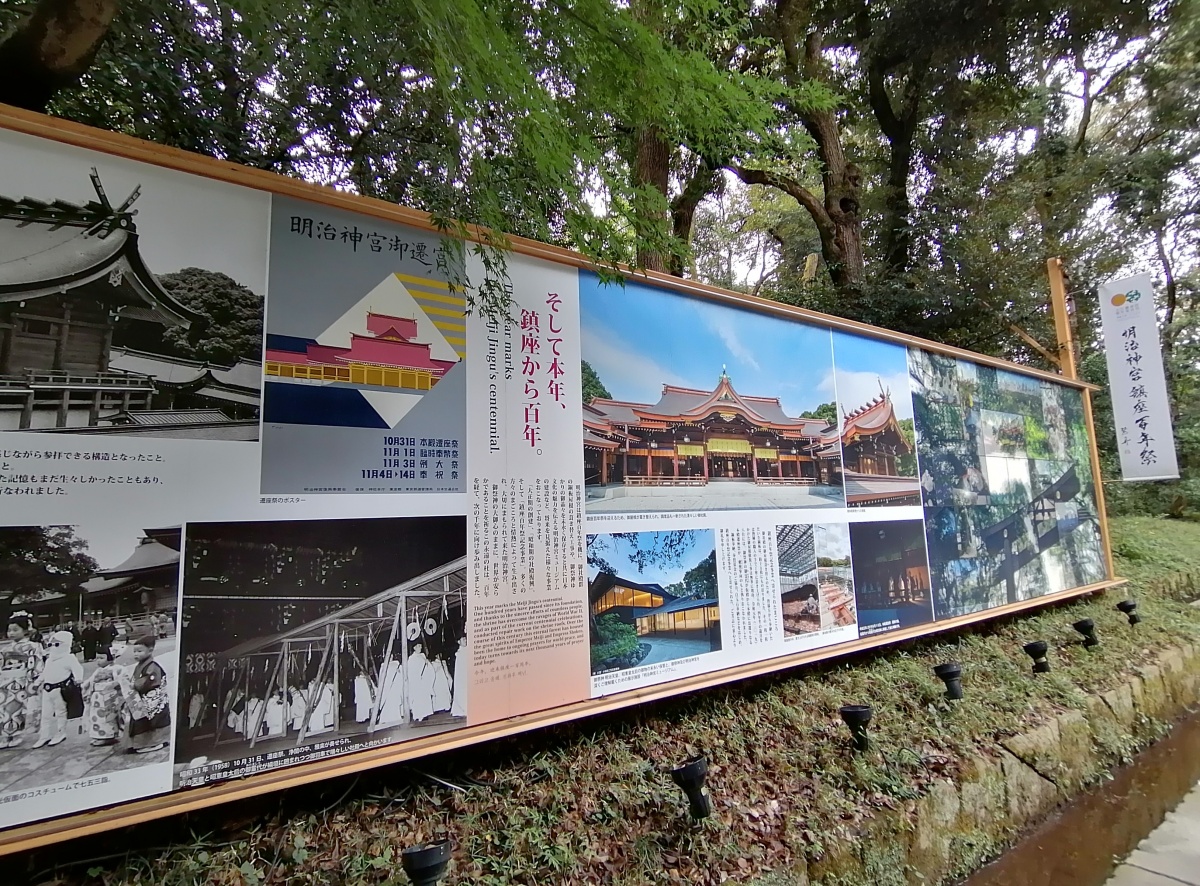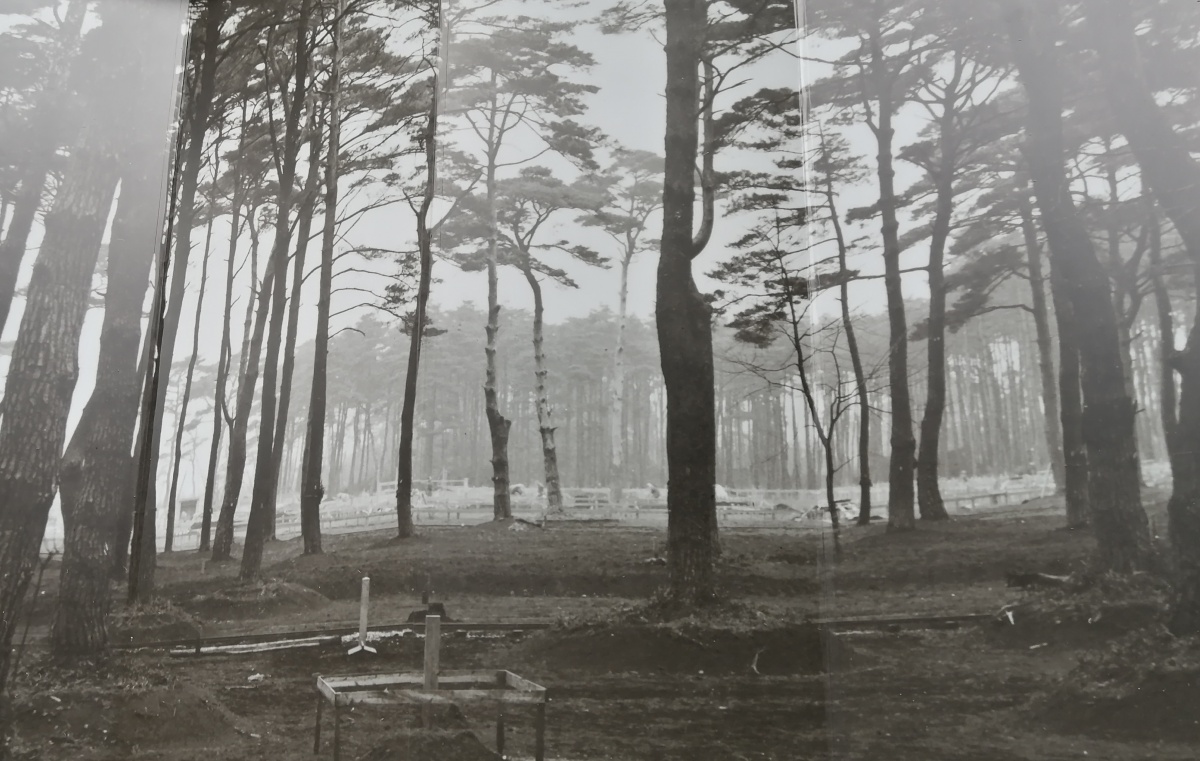Celebrating 100 Years of Meiji Shrine

On November 1st, 2020, Meiji Shrine turns one hundred years old! The shrine is holding a special centennial anniversary event, and is currently home to various exhibits explaining the history and traditions of the shrine, and the life of Emperor Meiji.
By Neal BeaverWhat Makes Emperor Meiji and Empress Shoken So Important?

Japan today just wouldn't be the same without Emperor Meiji. To say he was influential is an understatement! Emperor Meiji rose to the highest seat in 1867. This was a critical time in both Japanese and world history, as Western powers were all vying for power on a global stage. He is credited with pulling Japan into the modern world by creating Asia’s first constitutional government, developing Japan’s industries, fostering educational programs, and pursuing cultural advancements. He also modernized transportation systems, starting with the opening of the Keihin Railway.
Emperor Meiji was also interested in a kind of cultural assimilation, such as the Iwakura Mission; he sent approximately 60 envoys to Western countries to observe conditions overseas, prepare for ways to improve Japan’s treaties, and bring other industrial and culture knowledge back to Japan. He did all this while preserving a unique Japanese identity in a time of immense change. Empress Shoken strove to improve education for girls, and in 1875 established the Women’s Teaching College (presently Ochanomizu University). She also donated a fund with the International Committee of the Red Cross that continues to this day. You can currently read much more about the life of the Emperor and Empress (in English) on the walk-up to the shrine.
The Celebrations

The iconic pebble walkway leading up to the buildings of the shrine is currently lined with large plaques and historic photographs explaining the origins and history of Meiji Jingu, as well as the life story of Emperor Meiji. There is also a plaque highlighting notable women, famous foreigners, and other important Japanese figures that furthered Japan’s growth during the Meiji Era. These plaques have been titled “The Tale of the Eternal Forest.” In addition, there is a one of a kind outdoor art exhibition entitled Meiji Jingu Forest Festival of Art (runs until December 13, 2020). From October 30 to November 1, there will be an uptick in activities, including a Noh performance, dances, and a light festival held after dark.
There will also be a ritual ceremony at 10 a.m. the day of the anniversary. In addition, the Autumn Grand Ceremony, which celebrates Emperor Meiji’s birthday, will start on November 3! They’ve really gone all out to celebrate Japan’s most beloved Emperor, and there's never been a better chance to learn about him.
The Origin of the Shrine

Emperor Meiji died on July 30th, 1912, and the Empress passed away two years later. At his death, the people were devastated, and the construction of the shrine was meant to provide a place for the Japanese people to express their grief. Yoyogi was chosen because there was a garden associated with the Emperor and Empress. The Emperor wrote a poem about this garden, which can be read at the shrine now. In the poem he expressed a sense of calm, and a feeling that he had left the capital. After the location was chosen, the next step was to gather the best forestry experts, and to the plan the surrounding woodlands.
Meiji Shrine is known for its serene forest setting, a welcome break from the hustle, bustle, and stress of city life. Surprisingly, this forest is not natural but was completely man-made by 110,000 volunteers. “The shrine built by the people” is the title of the introductory plaque to the shrine’s construction phase. These volunteers came from every prefecture in Japan, and there is a map detailing how many came from each. They even came from Okinawa, no small feat in 1920 (before Peach Air and JetStar)! In the beginning, the land was a bit desolate. As nature is a central part to the Shinto religion, the first step in building Meiji Shrine was the planting of red and black pines in order to make a forest. Underneath these, faster growing conifers were planted along with evergreens and black oak. Today, there are 234 different kinds of trees from all over Japan.
Opening Day

Once the forest was put into place, construction on the shrine grounds began from what the shrine describes as “rough fields.” The spirits of Emperor and Empress were finally enshrined on November 1st, 1920 (Meiji Shrine does not actually contain the grave of Emperor Meiji’s physical remains; that lies in Kyoto). Reportedly more than half a million people visited the shrine that day. Just a few decades later, World War Two ravaged the country, and the shrine was burned to the ground. The plaques tell the story of reconstruction as well, which took until 1958 to complete. Emperor Meiji continues to protect the newer generations of Japanese people to this day, and listens to their prayers. Now is the perfect chance to celebrate the life of one of Japan's greatest emperors!


